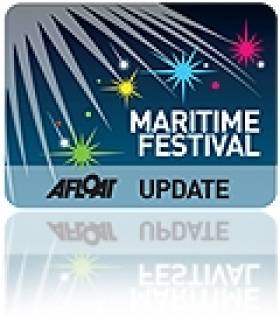Displaying items by tag: Malahide Afloat
'Malahide Afloat' feature at local Festival
There will be an added nautical flavour to this year’s Malahide Festival with the introduction of a new feature entitled ‘Malahide Afloat’, devised by Malahide Yacht Club and organised on Saturday 23rd July in conjunction with Malahide Marina and Malahide Sea Scouts - as the organisations most closely associated with the town’s most natural resource – and it includes a €5 overnight berth in the marina for any visiting boat on the Saturday night.
In what is a loose-knit collaboration, the three groups are hosting activities which amply demonstrate Malahide’s marine ties and so encourage even greater usage of the town’s marine-based facilities and its renowned seaside setting.
Malahide Yacht Club is hosting its annual ‘Wicklow Vase’ Race when dinghies from the Broadmeadows section of the club race against the keelboats out at sea and then meet up in the St.James’s Terrace clubhouse for the prize-giving (around 5.30pm). Boats will gather in the Lower Estuary from 1.30pm and the race will start at 3.00pm. The clubhouse will be open to visitors during the afternoon – new members are welcome - and the club will be ‘dressed overall’ with flags and bunting for the occasion.
Over at the Marina, one of Malahide’s major landmarks, visitors will be welcomed on to a section of the pontoons to gain a close-up view of yachts and motor-cruisers and experience the ‘maritime feeling’ at water-level. For safety reasons, numbers on the marina pontoons at any one time will be limited but access will be free and marina staff will be on hand to answer questions about boat ownership etc.
Visiting boats will be offered a special Festival rate of €5 to berth in the Marina on the Saturday night, on condition they register with the Marina Office on arrival, quoting ‘Malahide Afloat’.
Malahide Sea Scouts - one of the largest Scout groups in the country - have planned a day of action afloat. There will be skiff rowing races, canoe races and canoe polo, all taking place in the Lower Estuary. The Scout Den at the bottom of St.James’s Terrace will also be hosting an open day for prospective new scouts and their families to check out all the facilities and equipment on offer at Malahide Sea Scouts. It will provide an insight into what the Sea Scout movement is all about.
Further details from: Graham Smith – Malahide Yacht Club – 086-2580510























